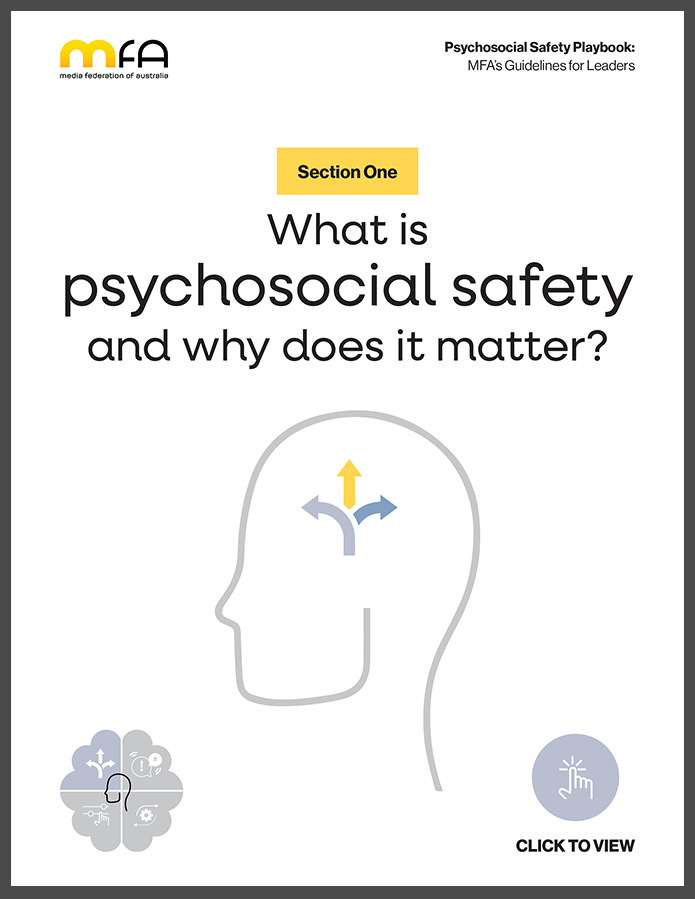What is Psychosocial Safety & Why Does it Matter?
Section One is your guide to psychosocial safety in today's workplace. It explains what psychosocial safety is and why it's important, detailing work-related stress and common psychosocial hazards. This section provides a business case and emphasizes the obligation for agency leaders, people managers, and HR professionals to identify and address these hazards. By doing so, they can create a supportive and thriving work environment.


FAQ's
Psychosocial safety refers to the measures and practices in place to protect employees' mental health and well-being by addressing and mitigating psychosocial risks such as workplace stress, bullying, harassment, and work-related burnout. It is essential for maintaining psychological wellbeing in the workplace.
Psychosocial safety is crucial as it promotes a healthy work environment, reduces absenteeism, enhances productivity, and helps in retaining talent. A safe psychosocial environment contributes to the overall well-being of employees and the organization's success, ensuring motivation and accountability.
A positive psychosocial environment improves employee morale, engagement, and job satisfaction, leading to higher productivity and better performance. Conversely, a negative environment can lead to stress, burnout, and decreased performance.
Employers can promote psychosocial safety by implementing clear policies against bullying and harassment, providing mental health support, promoting work-life balance, offering training on stress management, and encouraging open communication. Resources for agency leaders can be instrumental in this process.
Psychological safety focuses on interpersonal dynamics within a team, ensuring that individuals feel safe to express themselves without fear of negative consequences. Psychosocial safety, on the other hand, addresses the overall work environment, including organizational policies and practices that impact employees' mental health and well-being.


